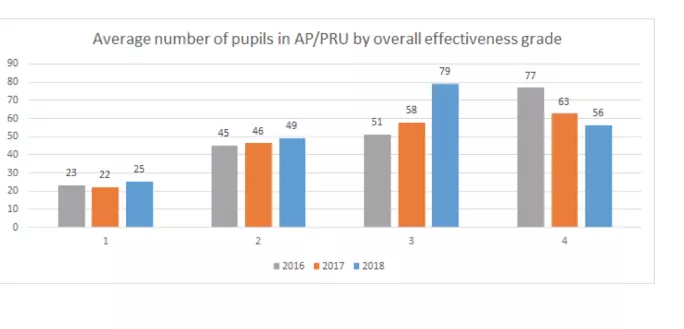New analysis has raised concerns that there are more pupils attending underperforming alternative provision (AP) than official figures suggest.
Findings published today by the Centre for Education and Youth show that alternative provision and pupil referral units (PRUs) with higher pupil numbers are more likely to get negative Ofsted judgements than those with fewer pupils.
As result, the proportion of students attending AP or PRUs which have been judged by inspectors to be less than “good” is higher than the headline figures for the sector.
Quick read: Northern leaders to be sent into top performing PRUs
Interview: How to teach challenging kids and never exclude them
Profile: Meet the woman making ‘the difference’ for vulnerable pupils
Loic Menzies, the CfEY’s chief executive said: “Previous research may have underestimated the proportion of our most vulnerable and challenging pupils educated in poor settings.
“Until now, figures have generally referred to the proportion of institutions judged ‘good’ or ‘outstanding’. However, our analysis shows that in fact, nearly a quarter of pupils in AP/PRUs are taught in grade 3 or 4 settings.
“The reason for this underestimate is that ‘good’ or ‘outstanding’ providers tend to be extremely small.”
While 17 per cent of AP and PRUs were rated less than “good” in 2018 by Ofsted, these schools were in fact attended by 24 per cent of pupils who were in AP.
And while 17 per cent of AP providers were rated “outstanding” by Ofsted last year, just 9 per cent of pupils in the system attended them.
Mr Menzies said: “These figures are concerning because we are talking about the most vulnerable students.
“What this shows is that the numbers of pupils attending AP or PRUs that are found to ‘require improvement’ or ‘inadequate’ is higher than Ofsted’s headline figure would suggest.
“This is because the average number of pupils in an ‘inadequate’ AP is more than twice as high as the average number for an ‘outstanding’ AP.
“This could either show that there are difficulties running larger provision or that the inspection is flawed and is easier for small providers and more difficult for larger providers to prove they offer a good standard of education.”
The most recent figures published by the CfEY show that the average number of pupils in an AP or PRU rated as “outstanding” was 25, compared with 56 pupils in AP or PRUs rated “inadequate”.
The average size of AP or a PRU judged to be “good” was 49 pupils, while for those “requiring improvement”, it was 79.
Kiran Gill, the founder of a programme that sends aspiring mainstream school leaders to work in PRUs, said CfEY’s findings showed the need for a better understanding of what “great” alternative provision looks like.
She runs The Difference, which sends staff from mainstream schools into PRUs on two-year placements and then looks to move them into mainstream school leadership.
Ms Gill said: “We are concerned that we don’t know what ‘great’ looks like across the sector.
“The Difference is using its three-year pilot programme as research. We’re seeking to understand from the 30 local authorities we’re working in what quality looks like and how it can be replicated as well as the barriers to this happening.
“We’re working in some of the best big PRUs in the country who get incredible results compared to the national average and at the end of the programme we will look to build on what we have learned.”
Ofsted declined to comment on the findings.






